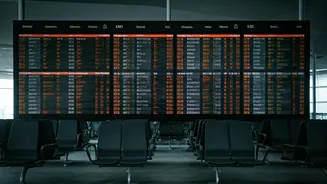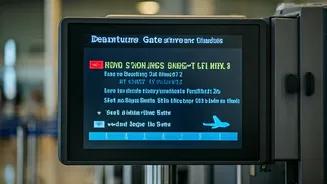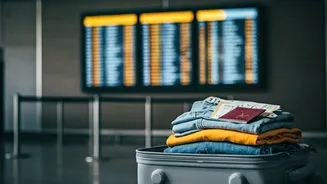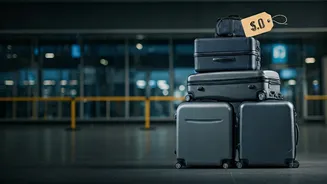Sharp Objects
When preparing for a flight, one of the first things to consider is the security regulations. Sharp objects top the list of things you should avoid packing
in your handbag. Items like knives, scissors with blades longer than a certain length (typically around 6 cm or 2.36 inches), and even certain types of nail clippers can be prohibited. This restriction isn't intended to cause inconvenience, but rather to ensure the safety of all passengers and crew. These items are potential hazards and could be misused. It's often safer to pack these items in your checked baggage, where they pose less of a risk. Doing so will help you avoid delays at security checkpoints, and reduce the possibility of having items confiscated.
Flammable Materials
Another crucial category of items to exclude from your carry-on bag is anything flammable. This includes things like lighter fluid, matches, and even certain aerosol sprays. These materials pose a significant fire hazard, especially within the confined space of an airplane cabin. The air pressure and environment within an aircraft can exacerbate the risk associated with these items. Security personnel are trained to identify and confiscate any flammable substances. If such items are found, you could face delays, questioning, and even potential penalties. To prevent any problems, be sure to leave these materials at home or pack them appropriately in your checked luggage, if permitted.
Weapons and Replicas
The rules concerning weapons on flights are very strict, extending to both real and imitation firearms or weaponry. Guns, knives, tasers, and any object resembling a weapon, such as toy guns or realistic-looking replicas, are generally forbidden. The primary purpose of this restriction is to maintain order and security, by eliminating potential threats or the possibility of causing panic among passengers. These items are often prohibited in carry-on bags. If you need to transport weapons for lawful reasons, you must declare them to the airline beforehand and comply with specific packing procedures. Failure to do so could result in serious consequences, including legal action. Always check the airline's and your destination's regulations concerning weapons before traveling.
Explosive Substances
Following the line of safety, any explosive substances are strictly forbidden in carry-on luggage. This includes fireworks, dynamite, and other items that could pose a detonation risk. The high altitude and pressurized environment of an airplane cabin can heighten the danger associated with such materials. This rule is designed to protect the safety of everyone on board the aircraft. Security personnel are highly trained to identify and confiscate any explosive materials found. Any violation of this rule can lead to significant legal repercussions. It's best to always err on the side of caution when packing your bags; if there is any doubt about an item, it's safer to leave it at home.
Large Liquids & Gels
Regulations on liquids and gels in carry-on bags are stringent. In most places, you can only carry liquids in containers that are 100 ml (3.4 ounces) or less. All these containers must fit within a single, clear, resealable plastic bag. This measure was introduced to enhance security and to prevent the transport of potential liquid explosives. Exemptions may apply for essential medications, baby formula, or special dietary requirements, but these items should be declared to security personnel for inspection. Exceeding these limits can lead to delays as your luggage is examined, and you might need to dispose of your belongings. Therefore, always pack liquids and gels responsibly and within the permitted guidelines.
Batteries and Power Banks
When traveling, batteries and power banks are subject to specific guidelines to minimize fire risks. Power banks, especially those with high capacities, must often be carried in your carry-on luggage and cannot be stowed in checked baggage. This is because they can pose a fire hazard if damaged, and crew members can address any problems in the cabin more easily. Lithium batteries, commonly found in laptops, cameras, and phones, are also subject to rules regarding their wattage and how they are stored. Always check your specific airline's regulations regarding the carriage of batteries and power banks before you fly. Also, ensure that all battery terminals are protected to prevent short circuits.
Sporting Equipment
Certain sporting equipment may be prohibited or restricted in carry-on luggage. Items such as baseball bats, hockey sticks, and even golf clubs can be considered potential weapons and are often not allowed in the cabin. Bulky or sharp equipment could pose a safety threat within the confined space of an aircraft. If you need to transport such items, they usually must be packed in checked baggage. It is best to review the specific regulations of your airline for sporting equipment before your flight. This ensures you comply with the rules and avoid any issues at the security checkpoint.
Tools and Hardware
The transport of tools and hardware is carefully regulated in carry-on luggage. Tools such as hammers, screwdrivers, and pliers can be seen as potential threats and are often prohibited in the cabin. The primary focus is to prevent misuse and ensure passenger safety. If you need to bring tools for a particular purpose, they typically must be packed in checked baggage. Always check your airline’s guidelines for specifics regarding tools. Complying with these regulations will help make your journey smoother and prevent any possible delays or complications when passing through airport security.












